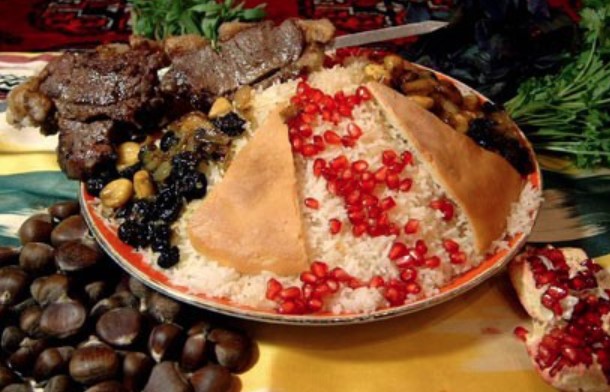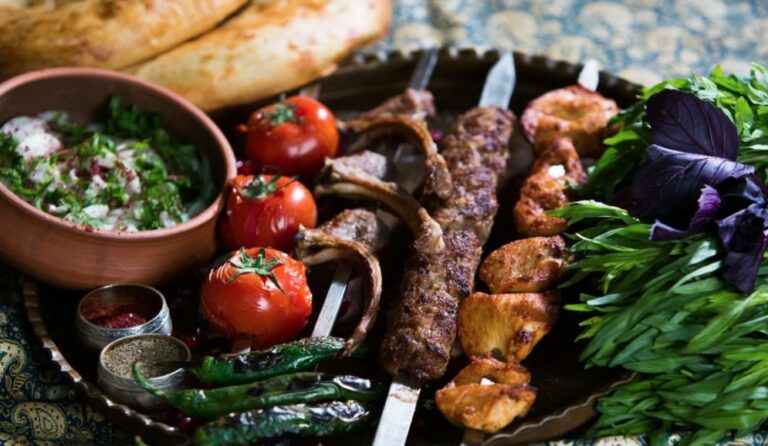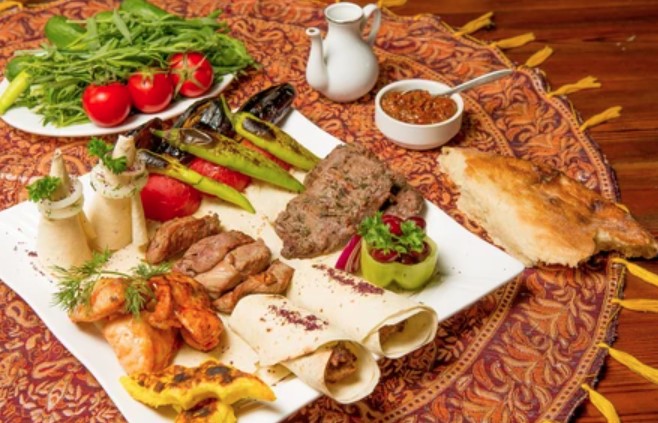Introduction: Azerbaijani Cuisine
Azerbaijani cuisine is a unique blend of Eastern and Western influences, resulting in rich and flavorful dishes that are sure to tantalize your taste buds. The cuisine is heavily influenced by the country’s geographic location, with strong influences from neighboring countries such as Iran, Turkey, and Russia. Azerbaijani cuisine is known for its use of herbs, spices, meats, and dairy products, which are combined to create some of the most delicious dishes in the world.
The Culture of Snacking in Azerbaijan
Snacking is an integral part of Azerbaijani culture, with locals indulging in a variety of sweet and savory treats throughout the day. From street vendors selling traditional snacks to high-end restaurants offering gourmet bites, there is something for everyone. Azerbaijani snacks are often made with local ingredients such as nuts, fruits, herbs, and spices, giving them a distinct flavor that you won’t find anywhere else.
Top Picks of Popular Azerbaijani Snacks
If you’re looking to sample some of the best Azerbaijani snacks, here are some top picks that you won’t want to miss:
Pakhlava: The Traditional Azerbaijani Sweet
Pakhlava is a traditional Azerbaijani sweet that is similar to baklava. It is made with layers of thin pastry filled with chopped nuts, sugar, and butter, and is typically served with a cup of tea. Pakhlava is a staple dessert during special occasions such as weddings, birthdays, and religious holidays.
Qutab: The Azerbaijani Pancake with a Twist
Qutab is a savory pancake that is filled with herbs, meat, cheese, or vegetables. It is cooked on a griddle and served with yogurt or sour cream. Qutab is a popular street food in Azerbaijan, and can be found at most local markets and food stalls.
Shekerbura: The Azerbaijani Cookie Filled with Delight
Shekerbura is a sweet cookie that is usually filled with ground almonds, hazelnuts, or walnuts. It is shaped like a crescent moon and is typically served during the Muslim holiday of Ramadan. Shekerbura is a delicious treat that is perfect for satisfying your sweet tooth.
Dovga: The Azerbaijani Yogurt Soup
Dovga is a refreshing yogurt soup that is made with fresh herbs, rice, and vegetables. It is typically served cold and is a popular summer dish in Azerbaijan. Dovga is not only delicious, but it is also very nutritious, making it a great option for a light lunch or dinner.
Conclusion: Exploring the World of Azerbaijani Snacks
Azerbaijani snacks are a must-try for anyone interested in exploring the world of international cuisine. With its unique blend of Eastern and Western influences, Azerbaijani cuisine is sure to excite your taste buds and leave you wanting more. Whether you’re looking for a sweet treat or a savory snack, there is something for everyone in Azerbaijan. So next time you’re looking for something new and delicious, be sure to try some Azerbaijani snacks!








![Can you recommend some Azerbaijani restaurants in [city]?](https://foodnerdy.com/blog/wp-content/uploads/2023/05/21-3.jpg)

